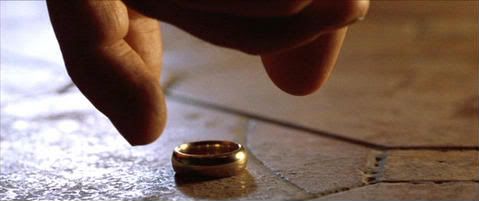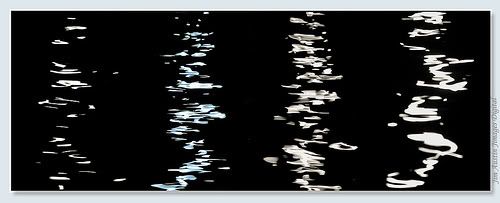Alatar wrote:The world of the Silmarillion is one of Myth, but the world of "Lord of the Rings" is not. The fact that they share characters is an accident after the fact.
An accident?

The world of Lord of the Rings is one in which "the myth" is still very much "real and present". There is no easy dividing line between what was and what is when immortals walk the earth. When Sam recognizes the living link between the light captured in the phial and the Silmaril that Eärendil bears as a star in the heavens, when he realizes that he and Frodo are "in the same tale still" and that it's still "going on", it seems clear to me that they (and myself as the reader) remain inside the myth.
Al wrote:I do claim that Tolkien intended us to feel that connection, however tenuous, and that Middle-earth, in his mind, was our Earth in another imaginary time and place. A Mythic time.
Di wrote:When I first read LOTR, it was obvious to me that I was reading a story set in our world. An imaginary history from our world, but unmistakeably rooted in our world!
All myth is rooted in "our world".

But as soon as one begins to describe the time and place in which a myth is set as "imaginary", then it is no longer "the real world". It becomes a symbolic world that is both comfortably familiar in order for us feel "attached" to it, and exhilaratingly unfamiliar, in order to shake us up a little (or a lot) so that we are forced to look inward (as Campbell says) to discover the real truths that the myth is attempting to reveal.
Ath, of course Middle-earth can't be accurately tied to our history, but that is nonetheless what Tolkien set out to do. To write a Mythic pre-history for England
And Tolkien well understood the connection between history and myth. Dynamic, living myth has little to do with history. It only becomes tied to history when it is no longer believed as being a valid representation of the world, when its symbolic references become lost or misread, when it slips from the realm of being "what is" to that of being "what was". I think that's why LOTR is so heartbreakingly poignant, why it strikes such a chord with so many of us......because it reveals a world that is about to slip from one realm into another.
Sass wrote:Both the Two Trees and the Silmarils would have been rendered superfluous had the sun and moon been present from the creation. Without the Light of the Trees there is no need for Fëanor to have some shadow of foreknowledge of the doom that drew near; and he pondered how the light of the Trees, the glory of the Blessed Realm, might be preserved imperishable .... and without the Silmarils there would have been no Doom of the Noldor.........and no exodus of the Elves back into Middle-earth. In short, the story would, of necessity, have been very different and, I dare say, unrecognizable.
Tolkien had to keep the myths as first written: too much depends upon the flat earth.

Absolutely, Sass! When I read "Myths Transformed", I get very cranky.

I always feel..........disappointed somehow that Tolkien would even consider sacrificing the stunning beauty and symbolic relevance of his great myth for a more scientifically accurate (

) cosmos. It is such a diminishment.

Sass, Ath, if you read back I've already proposed a solution that neatly solves both problems.
But they're not "problems", Al! The great, overriding theme IMHO of the myth that connects the Sil and LOTR is loss: death and immortality, "embalming" and preserving, fading and renewing, the long defeat, hope without guarantee....all are tied to this central idea. In the "Physical Universe" thread, I attempted to answer your proposal by raising the idea of the
axis mundi, and how the symbolic representations of the "blessed center of the world" are progressively lost. I think it's absolutely pivotal to the myth that Valinor remains exactly where it was always located within the cosmos of Eä. It is not moved away from the experiential realm of the world - the world is moved away from it. This, IMO, is fundamental to the whole "mixed myth and legend" feel to LOTR, where the characters (at least those with a measure of true wisdom) recognize the still tangible connection between what was and what is and what will "ever be". It is, I think, the basis of the "Sea longing" that pervades the tale from beginning to end: to be drawn towards the blessed center of the world, to find that place where "heaven and earth" are one.
Voronwë........GREAT post!

superwizard........I just want to say how much I've enjoyed your presence in this, and other, discussions in the Shibboleth. (and I see that we both consider Sam's musings on the stairs of Cirith Ungol as essential to understanding the importance of the "living myth" in the Third Age

)
Mith.........




